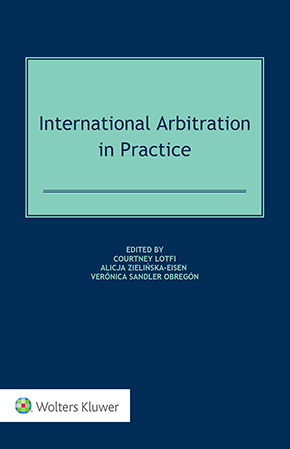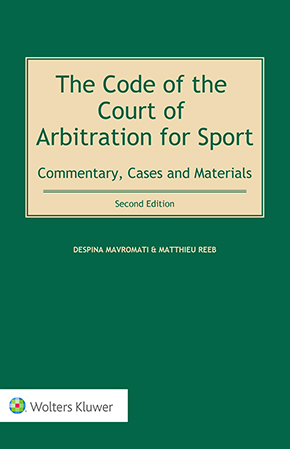Arbitration and Human Rights: Judicial Review of Awards Following Semenya v. Switzerland
August 16, 2025
On 10 July 2025, the Grand Chamber (“GC”) of the European Court of Human Rights (“ECtHR”) issued its judgment on the application brought by South African athlete Mokgadi Caster Semenya against Switzerland.
The case reached the ECtHR following Ms. Semenya’s unsuccessful civil appeal to the Swiss Federal Supreme Court (“FSC”) against an award of a Court of Arbitration for Sport (“CAS”) tribunal dismissing her challenge to the DSD Regulations issued by the sporting body World Athletics (for details of the FSC’s judgment and CAS’s award, see GC judgment paras 23-42; for details of the DSD Regulations that were being challenged, see GC judgment paras 70-79). The Regulations required athletes with the genetic condition Differences of Sexual Development to take testosterone-suppressing drugs as a condition for participating in certain “Restricted Events”, namely women’s track events ranging in distance from 400 metres to 1 mile.
The GC’s judgment affirms the duty of the national court to apply a heightened standard of review to awards where recourse to arbitration is mandatory and the arbitral proceedings determine fundamental rights. This post offers an overview of the GC’s judgment, then explores the implications of the ECtHR's approach for national courts and those involved in the arbitral process.
Semenya: A Brief Overview
A Chamber of the ECtHR gave its judgment in 2023, upholding complaints by Ms. Semenya under Article 14 (prohibition of discrimination) of the European Convention on Human Rights (“ECHR” or “Convention”) in conjunction with Article 8 (right to respect for private and family life), as well as under Article 13 (right to an effective remedy). The Chamber found by a 4-3 majority that the outcome of arbitral proceedings in the CAS, coupled with the narrow scope of review by the FSC, violated procedural aspects of her Article 14 right. Our case note on that judgment is here. See also here.
The GC also found a violation of the Convention, similarly rooted in the restrictive basis for FSC review of the CAS award – and by a convincing 15-2 majority. But by contrast with the Chamber, the GC ruled Ms. Semenya’s complaints under Articles 8, 13 and 14 outside its jurisdiction. Instead, it examined the case solely under Article 6(1) – the right to a fair hearing. Put shortly, Switzerland was not responsible for the underlying treatment by World Athletics – a Monegasque private law entity – of Ms. Semenya, who is neither a Swiss national nor resident, nor was she objecting to exclusion from competition on Swiss territory. Switzerland, however, was responsible for the civil appeal to the FSC.
On the merits of the Article 6(1) issue, the GC set out the following principles.
- Article 6 requires a court to conduct “a proper examination of the submissions, arguments and evidence adduced by the parties”. Further, the court must “provide reasons for their decisions”, including “a specific and express reply to those submissions which are decisive for the outcome of the proceedings” (GC judgment, para 194).
- Where arbitration is compulsory (as is the case with CAS arbitration for athletes: Mutu and Pechstein v Switzerland, paras 113-114), the arbitral tribunal must comply with the requirements of Article 6(1) (GC judgment, paras 198-205 and 213).
- This is “particularly important where the ‘civil’ rights which are the subject of the dispute correspond under domestic law to fundamental rights”, including “human dignity” (GC judgment, para 207).
- Therefore, where the arbitral tribunal has “mandatory and exclusive jurisdiction” and fundamental rights are concerned, Article 6(1) requires “a particularly rigorous examination” of the case (GC judgment, para 209). If the arbitral tribunal fails to undertake such rigorous examination, the national court must do so.
Applying these principles, the GC found that the CAS and the FSC had each failed to conduct a sufficiently rigorous examination of Ms Semenya’s case, in violation of Article 6(1) (GC judgment, para 238). In particular, in relation to three of the concerns about the DSD Regulations, which Ms. Semenya raised, the CAS merely noted them but failed to adequately address them when assessing reasonableness and proportionality, and the FSC failed to engage with this. The three concerns were:
- whether it would be difficult in practice for athletes to maintain their testosterone level below the permitted level (GC judgment, paras 223-225 and 228-230);
- whether there was an adequate evidential basis for applying the DSD Regulations to the 1,500 metre and 1 mile events (GC judgment, para 233); and
- whether confidential medical information of female athletes with DSD would inadvertently be made public (GC judgment, para 234).
The GC judgment is a milestone in the development of the ECtHR’s jurisprudence on the intersection between the ECHR and arbitration. On one hand, the GC reverted to an orthodox approach to extraterritorial State responsibility for alleged violation of substantive Convention rights, in contrast to the Chamber’s judgment, though Judges Bošnjak (Slovenia), Zünd (Switzerland), Šimáčková (Czech Republic) and Derenčinović (Croatia) issued a partly Dissenting Opinion defending the Chamber position on jurisdiction (though supporting the majority as to the outcome). On the other hand, the GC’s approach to jurisdiction under Article 6(1), and its analysis of the standard of fairness required where the “civil” rights at issue in arbitral proceedings resemble Convention rights, break new ground – and indeed were a further source of tension within the GC, with Judges Eicke (UK) and Kucsko-Stadlmeyer (Austria) dissenting as to the outcome.
These are important issues of ECHR law deserving detailed analysis in their own right. But they are also important in defining the implications of the case for arbitral practice – in particular, the scope of the “particularly rigorous” judicial examination required where an award determines “fundamental” rights. That is the main issue we consider in this post.
State Responsibility and the Scope of Judicial Review
The first point to emphasise is that the GC judgment leaves intact the ECtHR’s existing jurisprudence on arbitral proceedings. The State remains responsible for the conduct of private arbitral proceedings seated in its territory precisely because of the interaction between those proceedings and its judicial system, as explained in Mutu & Pechstein v Switzerland and subsequent cases such as BEG SpA v Italy (discussed here and here).
Hence, the ECtHR, when seised of a complaint of arbitral unfairness or apparent bias, is concerned with both the conduct of the arbitral proceedings and the response of the national court called upon to review the outcome. The national court is bound to examine the conduct of the arbitration through the lens of the ECtHR’s Article 6(1) jurisprudence, developed largely in the context of State judicial proceedings. That does not involve any special standard or intensity of judicial review as such, though it may require some adjustment of the approach of national law to issues such as disclosure or waiver of objections, as in BEG. This jurisprudence is gradually being received into Contracting State courts: see for e.g. here.
So far, so unproblematic. The difference, however, is that the complaints in Semenya concerned not the arbitral process, but the outcome where the subject matter of the arbitration is treatment said to infringe a party’s substantive rights of the kind protected by the ECHR. It is this feature that brings into sharp focus the question of scope or intensity of judicial review. Yet the GC offered only sparse exposition of what is required to meet the standard of a “particularly rigorous examination”, beyond stating that this must be “an in-depth judicial review – commensurate with the seriousness of the personal rights at issue” (para 238).
How Rigorous is “Particularly Rigorous”?
The application of this standard in Semenya was, in a sense, straightforward. The CAS tribunal had made stark and extensive findings about the intrusive effects of the DSD Regulations, and acknowledged that a proportionality examination of those effects might be necessary in the future. But it had stopped short of actually conducting that examination in the present case, and in particular had failed to apply the ECtHR’s well-established jurisprudence on differential treatment on gender, sexual orientation, and similar grounds. So the FSC’s task was not to undo the tribunal’s findings but, in effect, to plug the gap by completing the legal reasoning process for itself. But its constrictive approach to public policy had precluded that.
The GC’s conclusion is therefore consistent with the principle articulated by the Chamber, which required the national court to deliver “reasoned decisions which [take] account of the [ECtHR’s] case-law” (Chamber judgment, para 166). On that basis, the requisite standard of review is evidently something beyond mere control for “arbitrariness” (for an example of the ECtHR’s approach to “arbitrary” decision-making by the national court in the context of arbitration, see here and here), and certainly greater than traditional “public policy” review. But, as we explained in our analysis of the corresponding reasoning by the Chamber, it is also something considerably less than a full merits review.
The precise standard of review will inevitably vary from case to case. In the words of Lord Steyn in the UK human rights case R (Daly) v Home Secretary [2001] UKHL 26, “in law, context is everything” (judgment, para 28). As the GC’s own choice of words (“commensurate with the seriousness of the… rights at issue”) implies, the readiness of the national court to intervene will depend on the character of the particular rights at stake and the extent of the interference with those rights. But, crucially, it is also likely to depend on the extent to which the tribunal itself has grappled with the Convention exercise of assessing the proportionality of the interference. That would be entirely consistent with the ECtHR’s approach to the subsidiarity of its supervisory role vis-à-vis national authorities, including national courts. The ECtHR’s application of its “margin of appreciation” doctrine tends to afford greater weight to the national authorities’ evaluation of the justification for an interference if it demonstrates a considered application of Convention principles than when confronted with obviously deficient reasoning: see for example the GC judgment in Hirst v UK (No. 2) (paras 79-80).
A Key Takeaway for Tribunals and Counsel
A key consequence of the GC judgment is that the willingness of a national court to second-guess an award will be very much in the hands of the tribunal itself. If the tribunal, aided by the parties and their counsel, conducts a sufficiently rigorous examination of the case at first instance, this will limit the scope for involving the national court. Even where the national court finds a deficiency, in many cases, the proper course will be to remit the award (where national law allows) so the tribunal can apply the correct principles for itself and make supplementary findings of fact necessary to facilitate that process. Such an approach would ensure adequate judicial scrutiny of the tribunal’s application of the law while largely preserving the autonomy of the arbitral process.
You may also like











